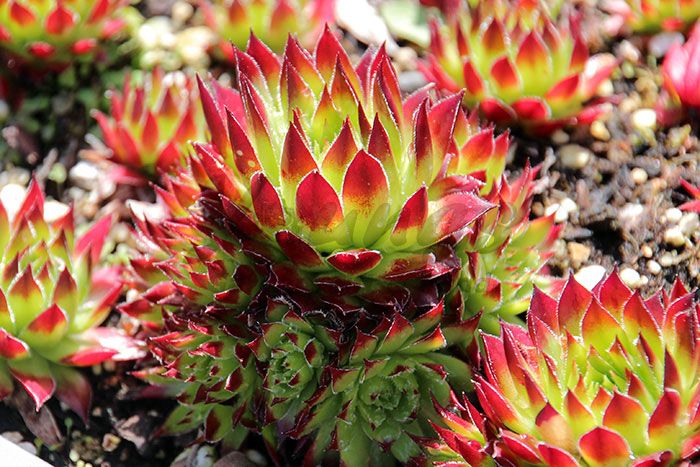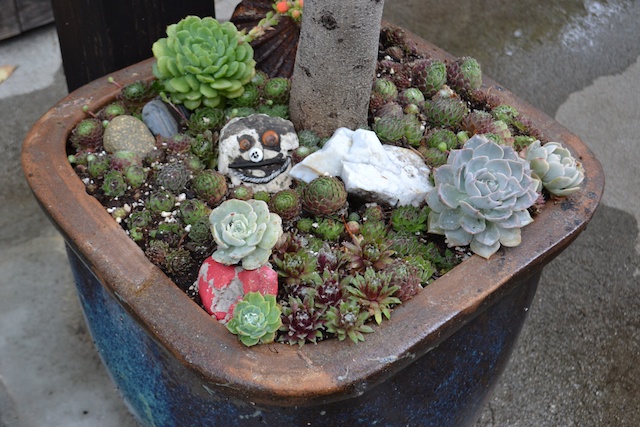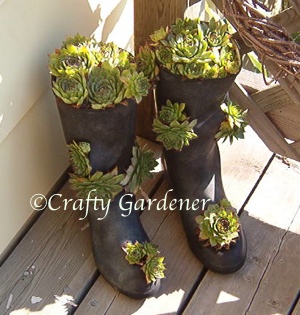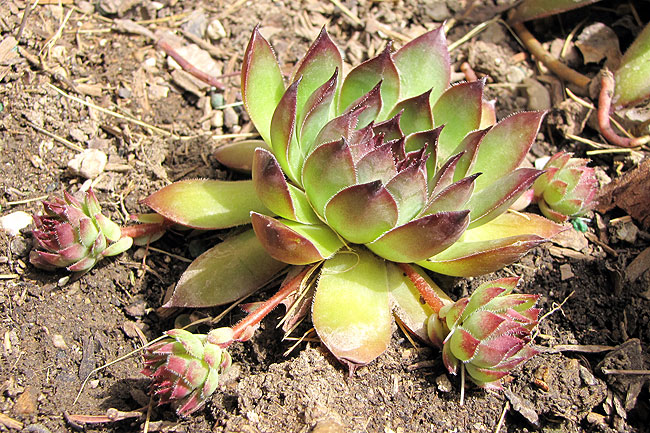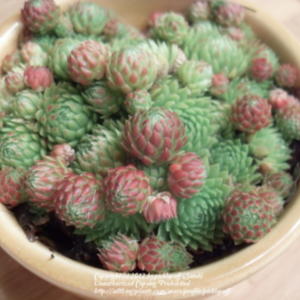Decorator uses
Hens and chicks are a versatile succulent that can be used on its own or with other succulents to create a beautiful arrangement that’s easy to care for. They can be used as party favours, centerpieces, wall hangings, fillers for containers, and more.
- When you want an attractive and fun way to fill the container, why not go with Potted’s idea and use hens and chicks?
- The Hindu Magazine displays a show-stopping landscaping with hens and chicks.
- Wadley Farms shows how to make a beautiful centre piece that would look divine on any table.
- You can either find containers or make them like the Crafty Gardener does for hens and chicks to spill out beautifully.
- Elizabeth Wray Designs shows how hens and chicks can make gorgeous centrepieces that are fit for a wedding.
With all the versatility of this plant, it’s definitely one that you should grow in your landscape occasionally.
Background
Hens and chicks are part of the Sempervivum genus which have about 50 species of plants and over 3,000 cultivars. The more common name for these types of plants is the houseleek, liveforever, and, of course, hens and chicks. All of these species flower and propagate in a way that makes them seem like they never die.
Although each species is different in varying ways, all Sempervivum are hardy from zones 4 – 8. They prefer well drained, even somewhat sandy soils. They can be planted in a range of the sun spectrum and do well, but planting them so they get full sun to part shade will ensure that their individual colours come out.
Planting
When planting Sempervivum, choose a pot or area that will let the water drain away. Then, place in sandier soils — even if you have to make your own with this mix from The Cacti Guide:
- 1 part “normal” soil mix with no large chunks of forest matter, such as bark
- 2 parts pumice, pearlite, aquatic plant soil, or other such textured soil.
- 1 part coir — shredded coconut husks like those from the hanging plant basket liners.
Mix it all together well and use like normal.
If you are planting these outside, check to make sure the soil pH is neutral. The Sempervivum prefer a pH between 6.5 and 7.5.
After planting, water your new Sempervivum thoroughly, then allow to dry out completely between waterings.
Care
These are quite possibly some of the easiest plants to care for. A Sempervivum needs very little water, and actually prefers to be more dry. When it is too wet for too long, the roots will rot and the plant will die. Thus, the easiest way care for them is to plant them in the proper soil, then water them once in a while as needed.
A hen’s lifespan is only three years long, and two years of that time is when it propagates. However, in that time, it can produce many chicks. Each chick can start producing babies of it’s own in just a season. After this time and many babies later, a Sempervivum grows a tall centre stalk that blooms just before the plant dies. Unfortunately, cutting off the center stalk will not prevent the plant from dying so just enjoy the show and say goodbye to the hen while enjoying the chicks.
Cut the old rosettes that have flowered and died back with a sharp knife at the soil to keep the area clean of old plants and add it to your compost bin.
Propagation
Sempervivum produce quickly, which gives them the ability to propagate easily. Just how easily depends on the variety.
There are three common types of Hens and Chicks: True Sempervivum, Jovibarba heuffelii and Jovibarba Rollers. They are all Sempervivum, but they produce offspring in different ways.
Sempervivum
These grow babies on stolons. Just pull off the chicks and plant elsewhere. It is best to remove the babies when the runner has begun to wither. Offsets root quickly and contact with soil is enough for them to start growing.
Jovibarba heuffelii
This species does not produce “chicks” on runners like above. Instead the offspring of this plant are produced within the mother plant. To propagate it must be split with a sharp, clean knife.
Jovibarba Rollers
These types of Sempervivum produce lightly attached “chicks” that easily pop off and roll away from the mother plant.
No matter which type you have fallen in love with and wish to propagate, there is one thing you should know. Growing new plants from seeds produced by the flower will not give you a plant that is true to type. However, if you use the offsets, it will preserve the character of each cultivar.
Sempervivums can be divided anytime during the spring/summer growing season. The baby chicks can be re-planted elsewhere or left to grow around the mother hen.
Potential problems
Sempervivium are quite disease and insect tolerant. Their one probably usually lies in root rot from too wet of soil.
Resources:

